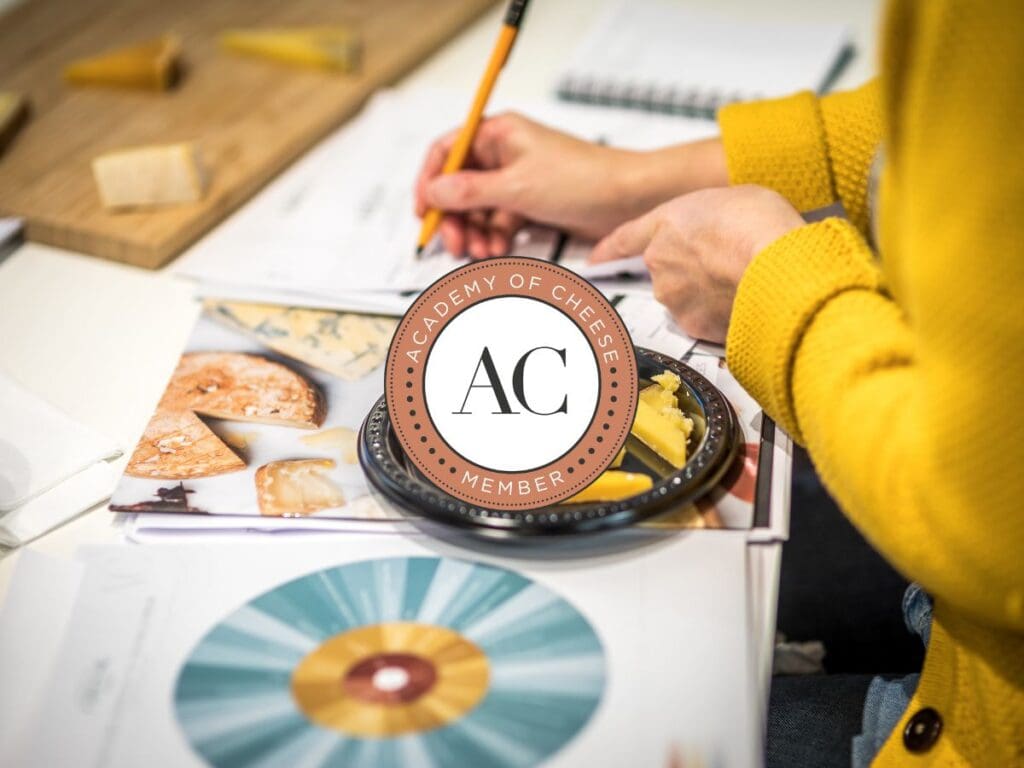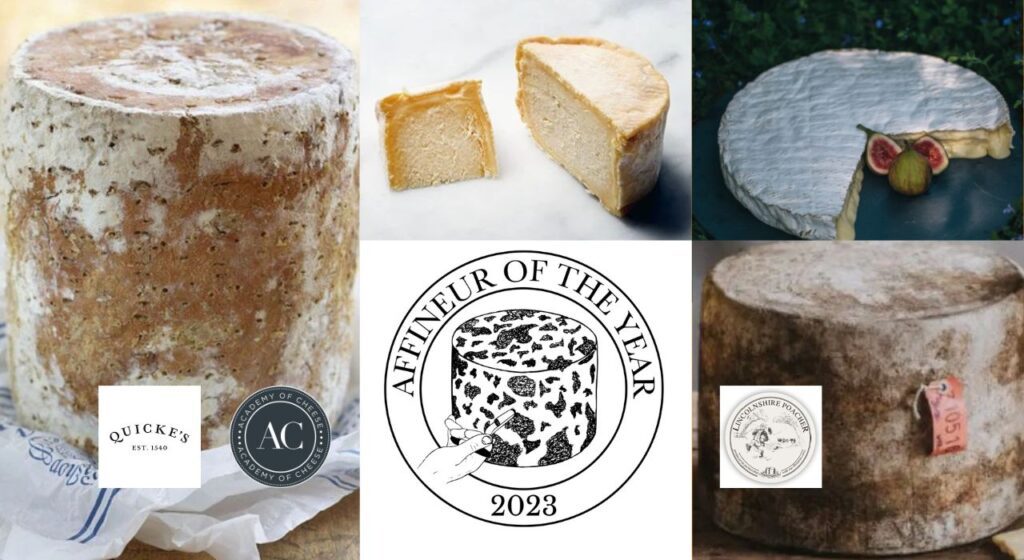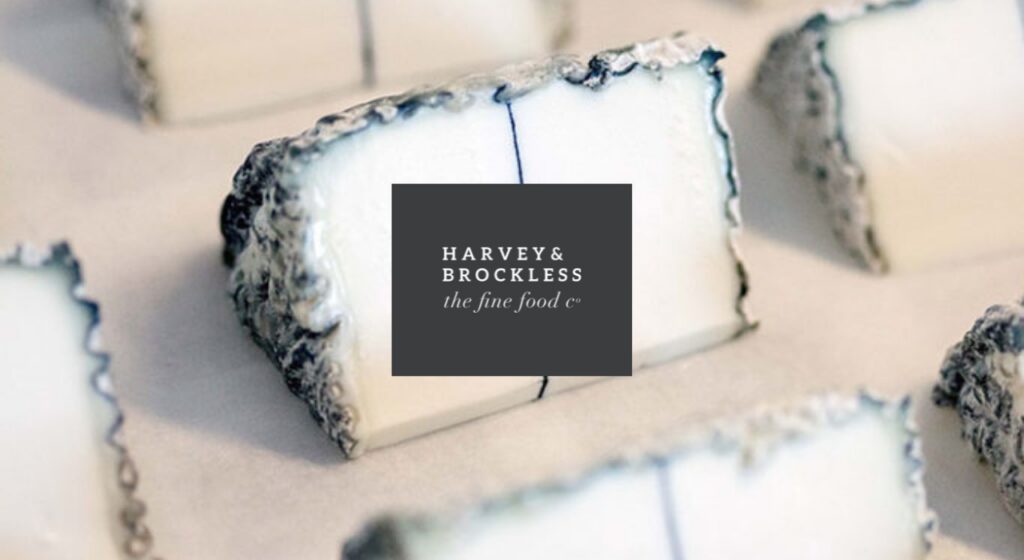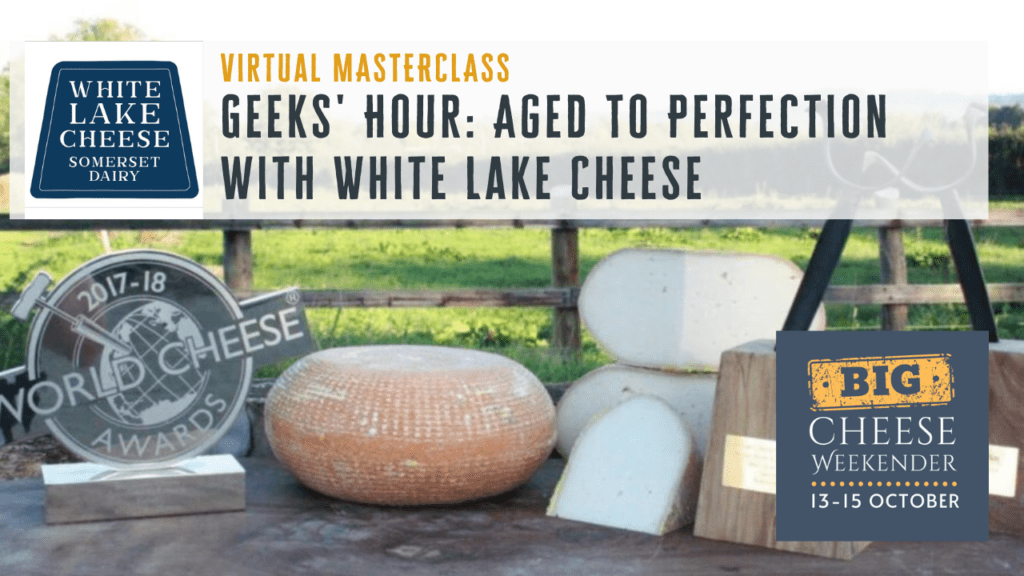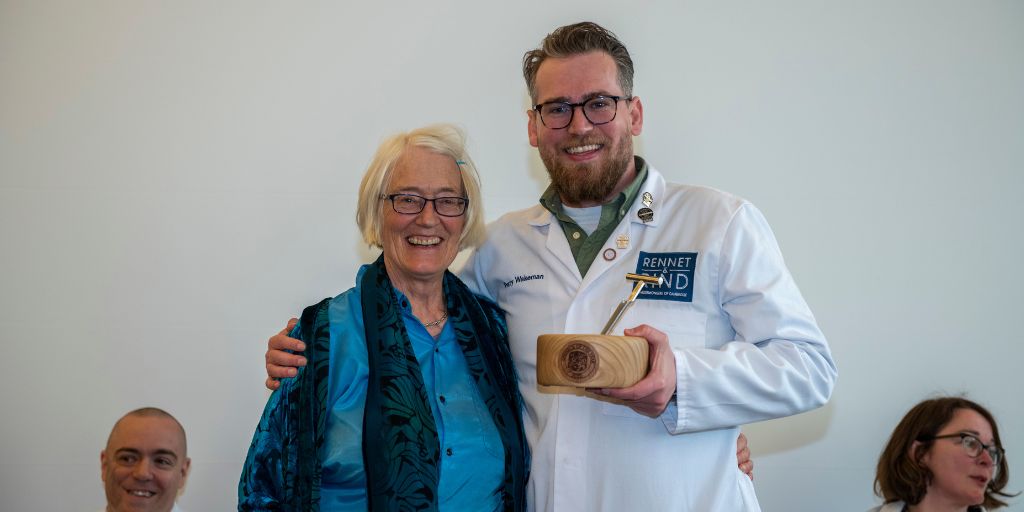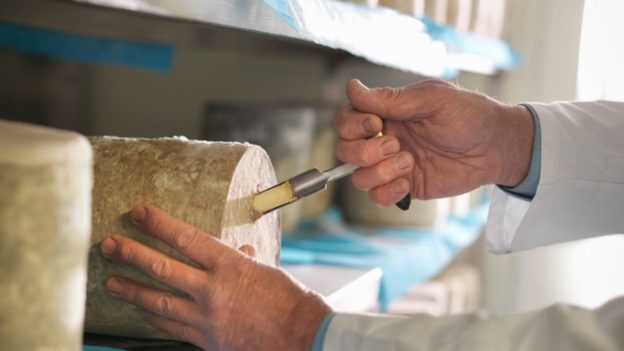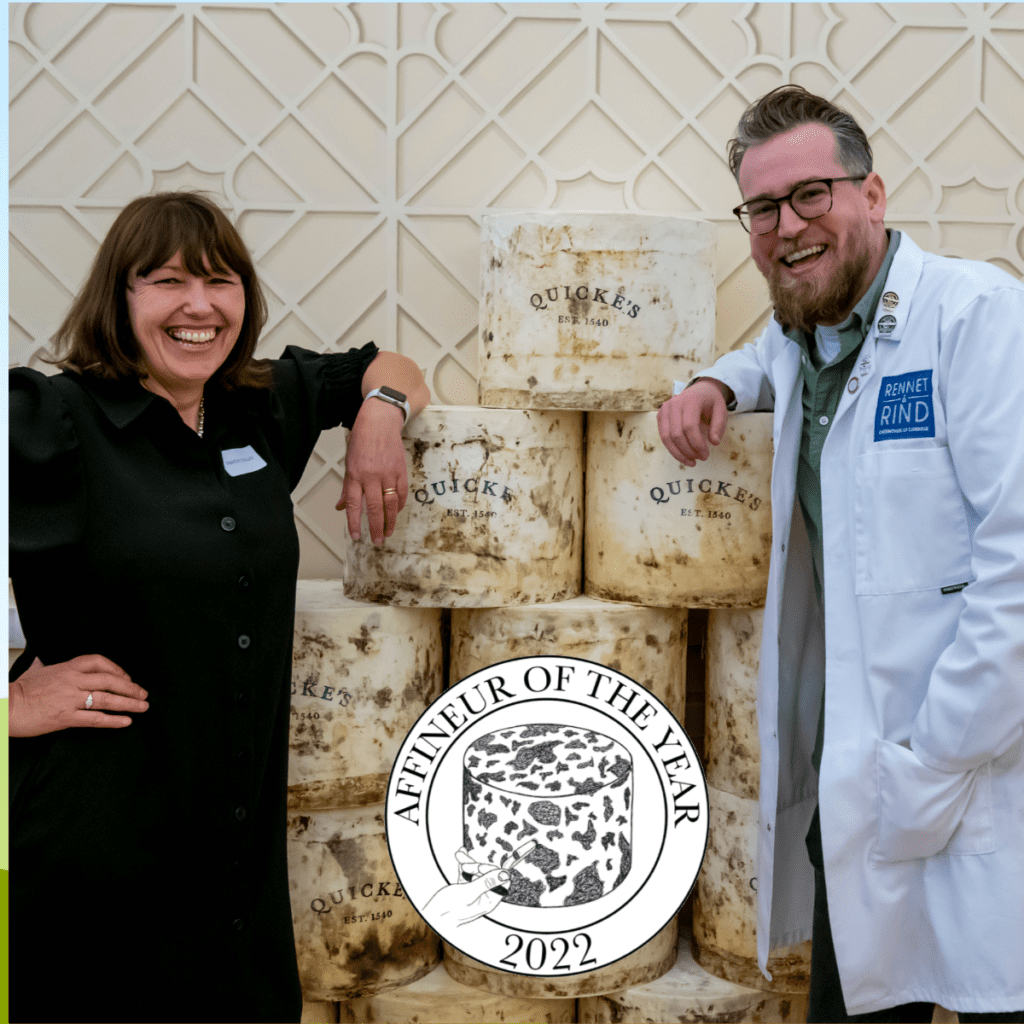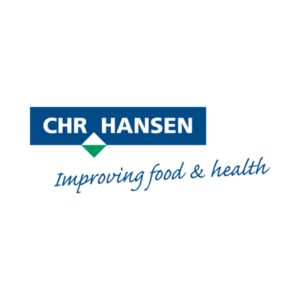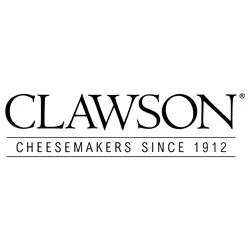Cheese Maturation, Affinage & Grading
To help you learn more about Maturation, Affinage & Grading, we’ve pulled together content about the subject from across the site.
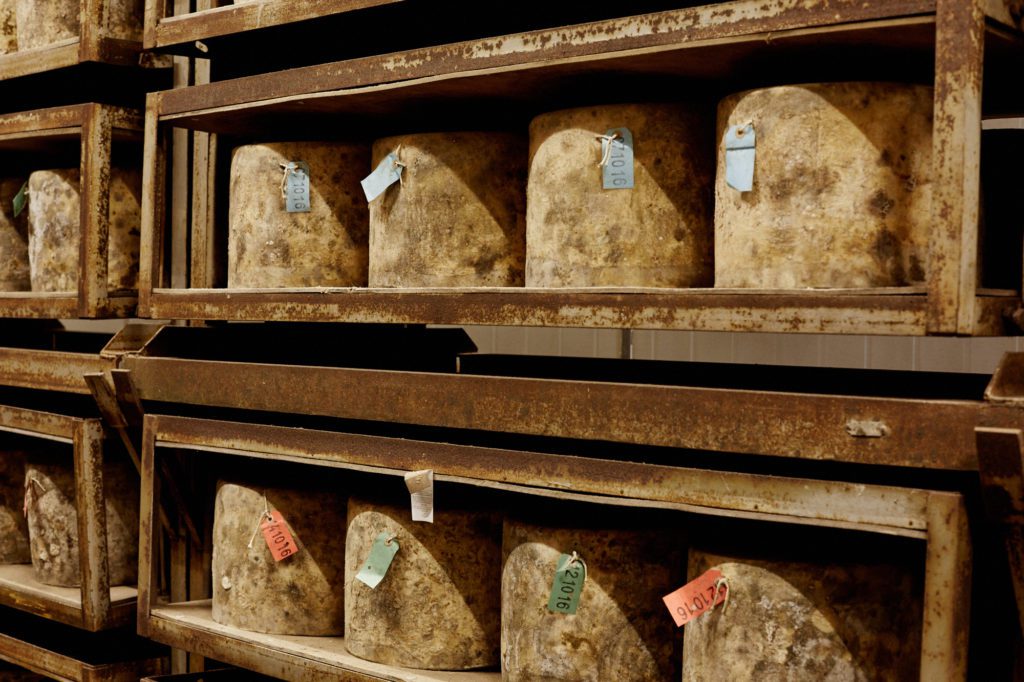
101 guide – Maturing Cheese | Chapter one
What is Maturing, Affinage and Grading?
Maturing cheese, Cheese Affinage and Cheese Grading
There are several reasons good cheese commands a premium price. One of those reasons is that of the skilled art of Maturing, Affinage and Grading. In simplistic terms, this is what happens to the cheeses AFTER they are made and BEFORE they are sold.
Also referred to as ripening or ageing, this area of cheesemaking is a combination of science and craftsmanship.
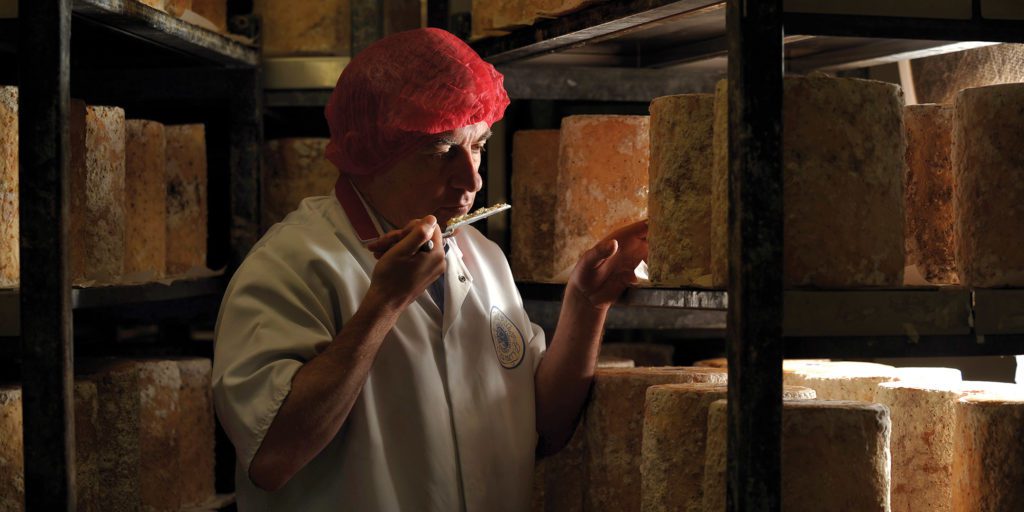
How does Cheese Mature?
Here’s the science bit: After a cheese is made, it will, essentially, go through a series of complex chemical processes. Micro-organisms on both the inside and out will break down the cheese’s molecules, leading to acidification and fermentation, starting the cheese on its journey towards its characteristic texture and flavour. It is a process that can take days (in the case of fresh cheeses such as mozzarella and ricotta), weeks (mould-ripened brie), months (blue cheese and cheddar) or even years (Parmigiana Reggiano) to complete.
How does Cheese Ripen?
The same cheese will ripen in different ways, depending on temperature, humidity, any other microflora that is present in the maturing room. Additional tricks and techniques can also be used – this is the craftmanship part – such as washing with alcohol or wrapping in certain materials.
What is Cheese Affinage?
To illustrate this more clearly, an aged Manchego for example, will be harder, bolder and have more brothy notes than a younger version of the same cheese. Whilst a Blue Stilton may be sharp, tangy and crumbly when young, it will mellow over time, developing richer, complex umami flavours and become more creamy. It is the length of time they are allowed to age, or mature for, along with the environment and techniques applied during that ageing process that will help develop these cheeses into the best possible cheeses they can be.
What is Cheese Grading
Whilst the cheeses are maturing, they will be regularly assessed, or graded, which can be performed by the cheesemaker or an independent cheese grader. The purpose of grading is to ensure the cheeses are on track and in-line with the quality and flavour profiles the customers expect from that specific cheese. This can be done with the use of a cheese iron, which is bored into the centre of a large cheese. A plug is extracted and evaluated on flavour, aroma, body texture, finish and colour.
101 guide – Maturing Cheese | Chapter TWO
What does Maturing Cheese, Affinage and Grading mean to the Cheese Industry
What is an Affineur?
This role of caring for cheeses as they age is known as affinage. And one who practices affinage is known as an Affineur. Whilst the art of affinage has been recognised for centuries, it is still often a misunderstood and undervalued profession.
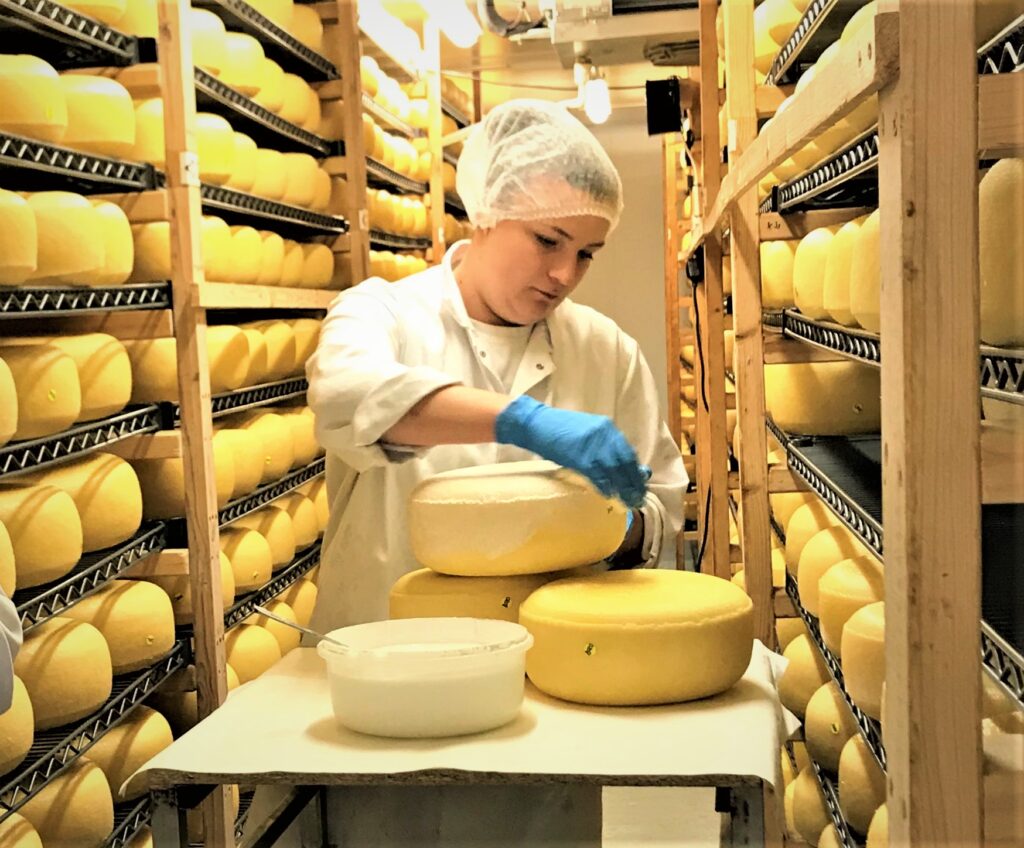
An affineur is neither a cheesemaker nor cheesemonger, but rather someone that sits in between both professions. A cheesemaker may play the role of affineur for their own cheeses, holding onto and caring for them until ready for sale to the public or wholesaler. Likewise, cheesemongers may build their own maturing rooms (also known as “caves” or “cellars”) and take in the young cheeses and mature them themselves for onward sale. As awareness and appreciation of this centuries-old profession increases, more and more craftsmen are becoming affineurs in their own right.
There are many skills required to do the job of an affineur. Skills comprised from traditions passed down through generations, signature techniques adapted over time and methods learnt through training. All this expertise will often be set against a backdrop of apothecary, steering the vocation in the direction of artistry.
Cheese Affineur skills and techniques
The abundance of skill and time required to mature a cheese to its full potential is why the profession of affinage is usually associated with the artisan cheese industry. It plays a big role in the production of prominent cheeses such as Clothbound Cheddar, Le Gruyere AOP and Parmigiana Reggiano. These cheeses are known for their complex flavours and textures, which result from careful aging and attention to detail. This additional stage in the production of cheese allows cheesemakers and mongers to command a higher price, by adding value to what is already considered a premium product.

Cheese Affineur techniques
The techniques and skills used by an Affineur include, but are not limited to:
- Rind washing to influence the flavour of a cheese.
- Brushing and turning cheeses to ensure they remain in their optimum condition.
- Understanding the role of microflora in the ageing process.
- Adding salt to determine flavour and texture.
- Understanding how levels of humidity and temperature can affect the ripening times of a cheese.
- Ensuring cheese safety is adhered to at different stages of maturation and storage.
- Recognising when cheeses have reached their full potential using a grading iron.
How to Affinage a Cheddar
So, to put this all in context, let’s consider the affinage of a Cheddar. As with all cheeses, they ripen best in a cool, damp climate – one that is conducive for any present or introduced microflora to interact and reproduce. Not as cool as a domestic fridge, but much lower than room temperature. This is the first control method: temperature and humidity, and with most maturing rooms achieving best results at around 10-13C and 90% humidity, this is no exact science. Next, with the cheese merrily ripening, the affineur will turn and brush the cheddars, keeping those micro-critters happy and in check. In some cases, the cheeses may be washed in a brine or alcohol solution, or even wrapped in a substance to help contribute to flavour. With all this happening, the skilled affineur will need to use their finely-tuned senses (alongside a grading iron) to ascertain the cheese’s stage of maturity and make decisions as to whether the cheese is ready for market, or if it has the “legs” to be aged for longer and further on the flavour-scale.
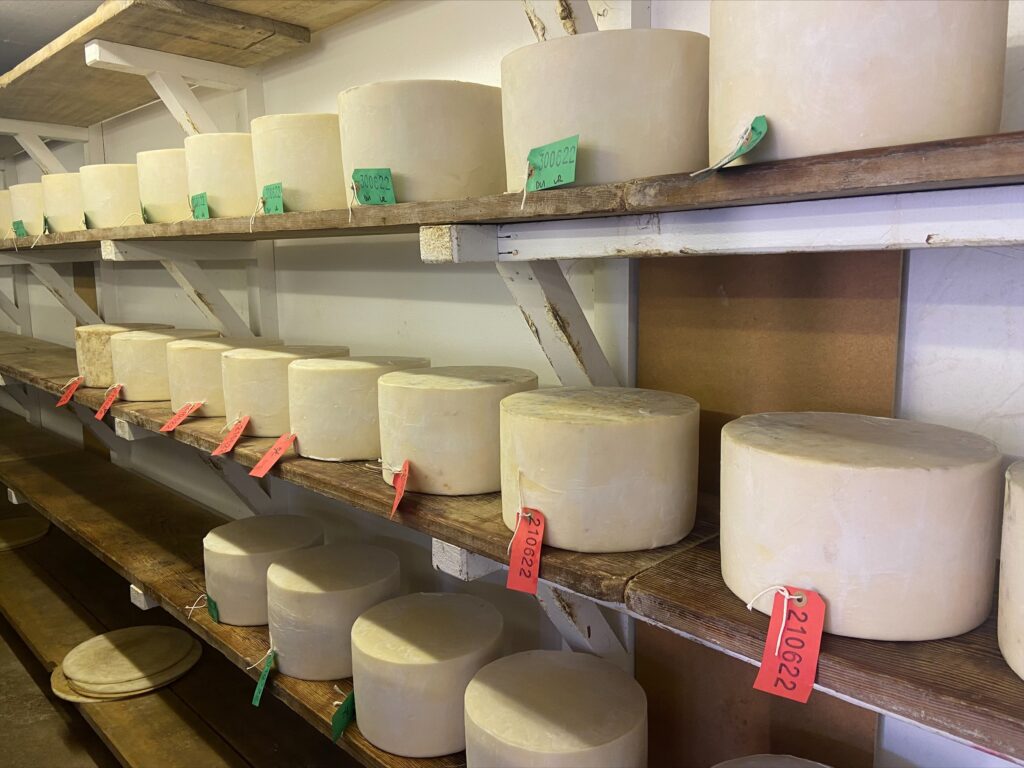
For cheesemongers, it is helpful to know some of the basic techniques used when ageing cheeses, especially in relation to younger cheeses with shorter shelf-lives. Storing cheeses in the appropriate environment will help prolong the shelf-life, or speed up the ripening process if needed imminently for an event or weekend sampling.
101 guide – Maturing Cheese | Chapter three
What does Maturing cheese, Affinage and Grading mean to consumers?
Mature Cheese
It is easy to understand the term “maturing” when it comes to cheese: most of us will know that the more “mature” a cheese is, the stronger it is in flavour. But how does this translate into skill and technique? And what is does “affinage” and “grading” bring to the cheese party?
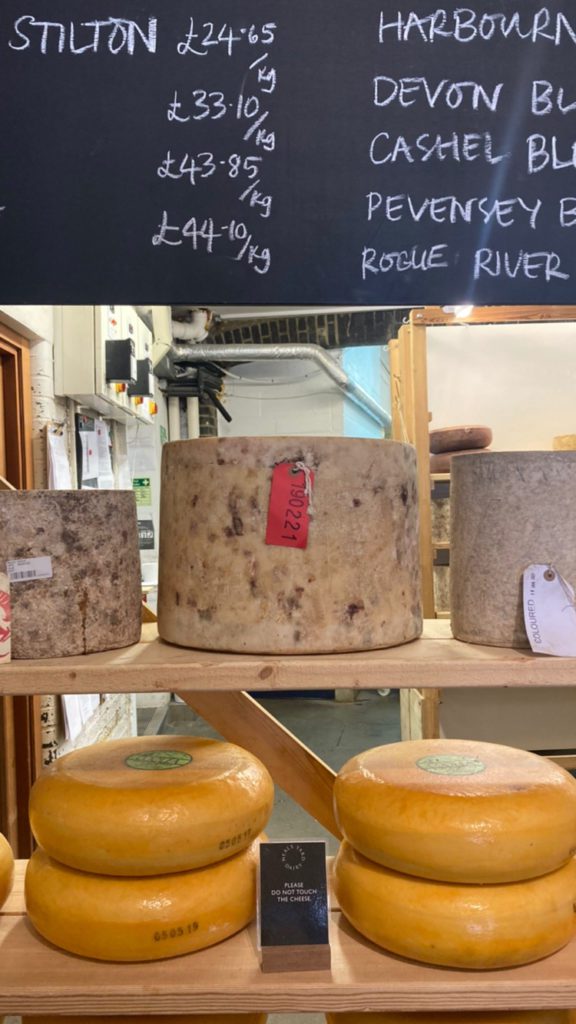
Grading Cheese
In short, “affinage” is the professional term for collectively maturing and caring for a cheese, whilst “grading” is one of the techniques used during this time, to ascertain whether the cheese is on track to being the best it can possibly be.
Specialist or artisan cheese
As discussed above, cheeses need different treatments, specialist storage facilities and often extended periods of time to keep them happy, healthy and on-track to reach their full potential. It is these factors that will help the specialist retailer respond to their customers when asked why good cheese costs more than mass-produced cheese. With artisan cheese, the production costs are already high, taking into account the rearing of animals and the financial burden of running a dairy farm. Now consider the additional costs of affinage, especially those involved in hard, pressed cheeses. Whilst they may only take two to three days to “make”, it can take weeks, months or even years for a cheese to reach full maturation. We, as consumers, are paying for the time, skills and expertise of the affineur to deliver us our favourite cheeses in the best possible condition.
Finally, in understanding the role of affinage, consumers will be able to employ some of the basic techniques used, particularly in relation to the temperature and humidity of their fridges, to speed up or slow down the ripening process, so that their cheeses are at peak condition when it comes to serving them.
101 guide – Maturing Cheese | Chapter four
Academy of Cheese’s role in Maturing cheese, Affinage and Grading
Highlighting the importance of affinage
Recognition of this specialist area of cheesemaking and mongering cannot be overstated, with the role of Affineur crucial to the delivery of great-tasting cheese.
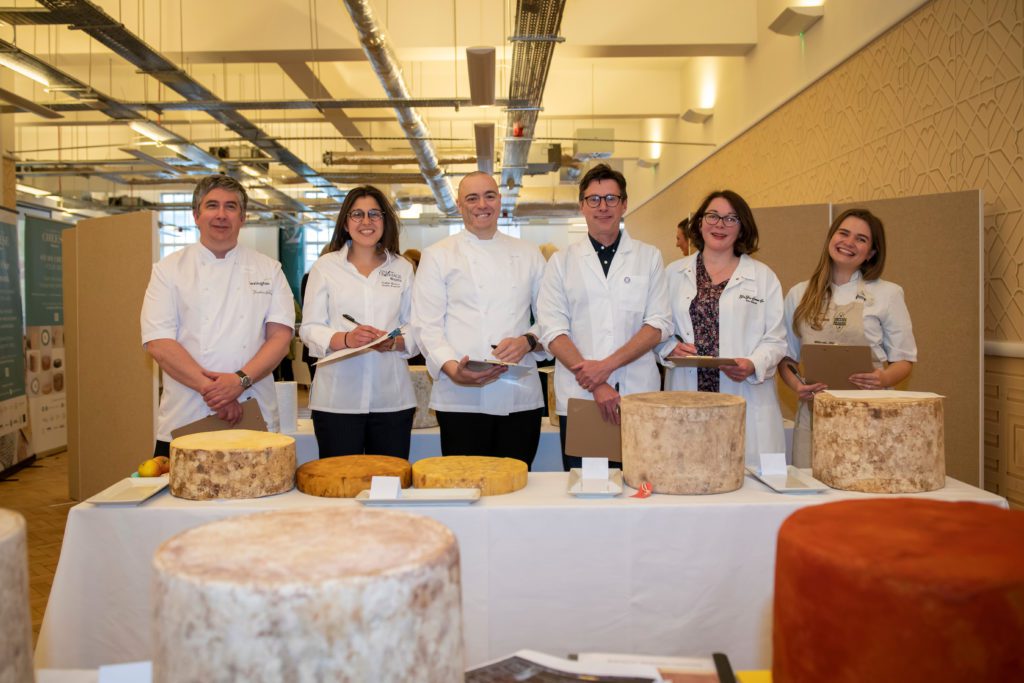
The Academy of Cheese is committed to educating both industry professionals and cheese-loving consumers, of this skilled profession by covering the topic of Maturing, Affinage and Grading with its own module, within each of their three levels of certification.
Affineur of the Year competition
To emphasise this commitment and raise awareness of the skills involved in maturing and affinage, the Academy of Cheese has created the Affineur of the Year competition. Launched in 2021, the competition is a unique opportunity for cheesemongers and cheesemakers to showcase, across the world, the skill and artistry involved in guiding a cheese to its full potential and is the only competition that allows both cheesemakers and cheesemongers to compete on the same stage. More information on this year’s competition.
101 guide – Maturing Cheese | Chapter five
How is Maturing, Affinage and Grading taught in our Cheese Certification
Learning to Mature Cheese
Each certification builds upon the previous level, with the skills involved in Maturing, Affinage and Grading a cheese progressing very much from an end-user perspective at Level One to the science and commercial practices more relevant to an industry professional at Level Three.

Level one – the basics of maturing a cheese
At Level One, we look at the basics of maturing a cheese, predominantly from a visual perspective. How the different moulds and yeasts help to ripen a cheese, how to recognise when a cheese has reached its perfect condition and how to speed up or slow down the process as a cheese approaches the end of its shelf-life.

Level two – the Science of maturing a cheese
Level Two takes a more scientific approach, with further emphasis on the technical aspects of affinage more appropriate to the production side. This includes rind washing, adding salt and additional flavours to cheese; the role of microflora, brushing and turning cheeses, and temperature control. It is expected that a student would be able to recognise the stage of maturation of more complex cheeses at this level, including hard and blue cheeses and also identify some common cheese defects.
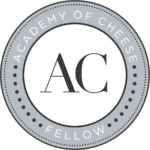
Level three – the role of the Affineur
Level 3 takes a more detailed look at the role of the Affineur and the tools at their disposal. Delegates will learn ripening procedures for the several different styles of hard and soft cheese and be able to identify possible defects and recommend remedial action.
101 Guide Resources
Find all the articles, video, and resources you need to study this subject.
Blog
Maturation, Affinage & Grading Articles
Maturation, Affinage & Grading Videos
Maturation, Affinage & Grading Tools and Resources
More subjects to explore.
Cheese, obviously! We are the Academy of Cheese after all. But, our mission is much greater than just a passion for cheese. Check out the pages below to see why we need to protect, support and promote cheese, its makers and mongers, how it’s possible and what we are doing to get there.
Keep up to date with our progress. Subscribe to our blog!
Subscribe to our blogs
Get Academy mission updates delivered straight to your inbox. Subscribe to our blog and we’ll let you know what we are doing to protect, support and promote cheese, its makers and mongers as it happens.
